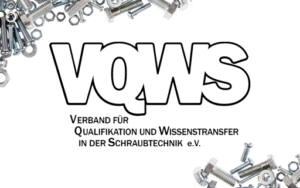
KI recommends the optimum tightening torque
Screw connections are one of the most frequently used connecting elements. Flexible application options, cost-effective assembly as well as loosenability and elasticity are among the advantages of bolted connections. With the help of digital solutions using AI methods, the calculation of these connections can be carried out more quickly, effectively and with a high degree of reliability. This is because AI can provide the designer with detailed suggestions even before the calculation process.
The bolted connection system in VDI 2230
The prestressed bolted joint is an indeterminate system that can only be determined by taking into account the deformations, stiffnesses and the point of force application. This is realized in VDI 2230 by means of a spring model, the tightening factor and the force application factor. For the interpretation of the results, a graphical representation in the stress diagram is suggested.
The bolted connection system in VDI 2230
The current calculation of bolted connections according to VDI 2230 means that the designer has to take into account a wealth of influences and their mutual influence, which requires extensive knowledge and experience. The complexity of applying the guideline should not be underestimated, as the person performing the calculation must deal intensively with the input variables (loads, materials, force application factor).

The bolted connection system in VDI 2230
By integrating digital solutions based on AI network methods, the user can retrieve recommendations based on a comprehensive data set at an early stage of the design. AI can help to determine the optimum tightening condition in order to suggest the optimum tightening torque during the design phase, based on the utilization of the yield strength during tightening.

The recommendation proposed by KI is based on an extensive data collection of strength calculations in accordance with VDI 2230 Sheet 1, which, after the suitable value ranges and variance of the influencing variables have been determined, selects the relevant calculations with a balanced stress state in a filter process. Based on this selected data collection, the AI can propose solutions for the optimum stress state with a very high degree of accuracy. These solutions fulfill all five Safeties:
- Safety against exceeding the yield point (screw)
- Security against fatigue fracture (screw)
- Safety against exceeding the surface pressure (plate)
- Security against gapping
- Safety against sliding
Conclusion
The calculation of bolted joints in accordance with VDI 2230 is currently usually carried out in a linear process in which the designer enters input variables in the calculation, calculates them and then interprets the result. If this is not satisfactory, the input variables must be varied and the process begins with a new iteration loop.
AI solutions can provide support here by breaking through this linear process. As they have data from millions of calculations performed, they can predict the result in a matter of seconds as soon as it is entered and suggest the best possible influencing variables (such as the optimum tensioning state).
AI applications can save time in the design process, increase the reliability of the design and support the calculation of machine elements without the user having to have extensive knowledge of the respective guideline. In the future, there will also be more market-ready applications for design and development tasks that will be helpful to designers.



